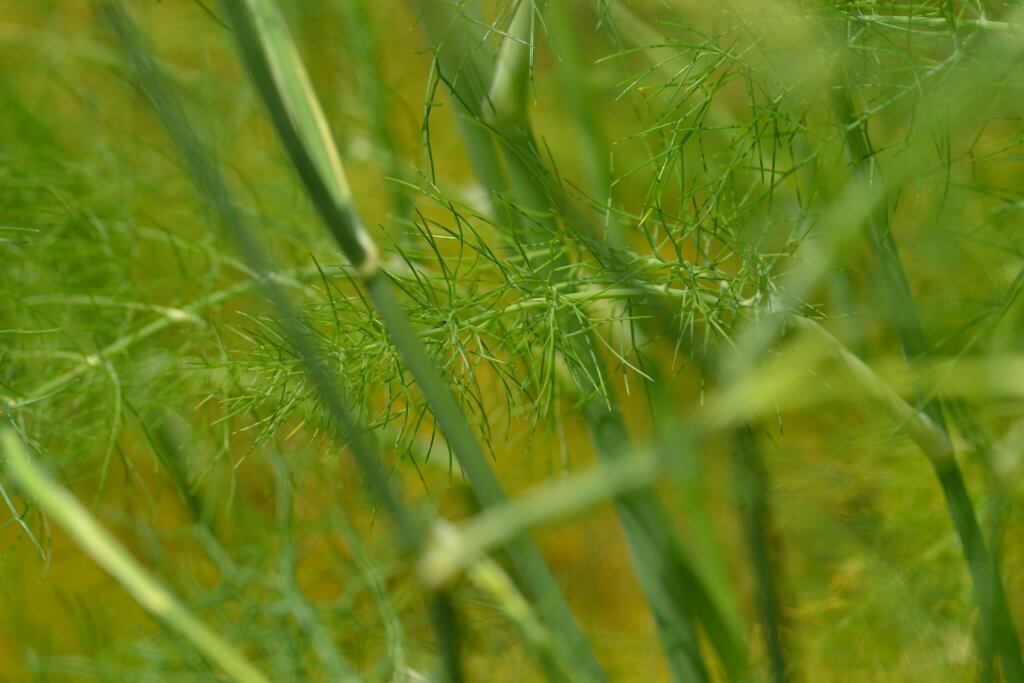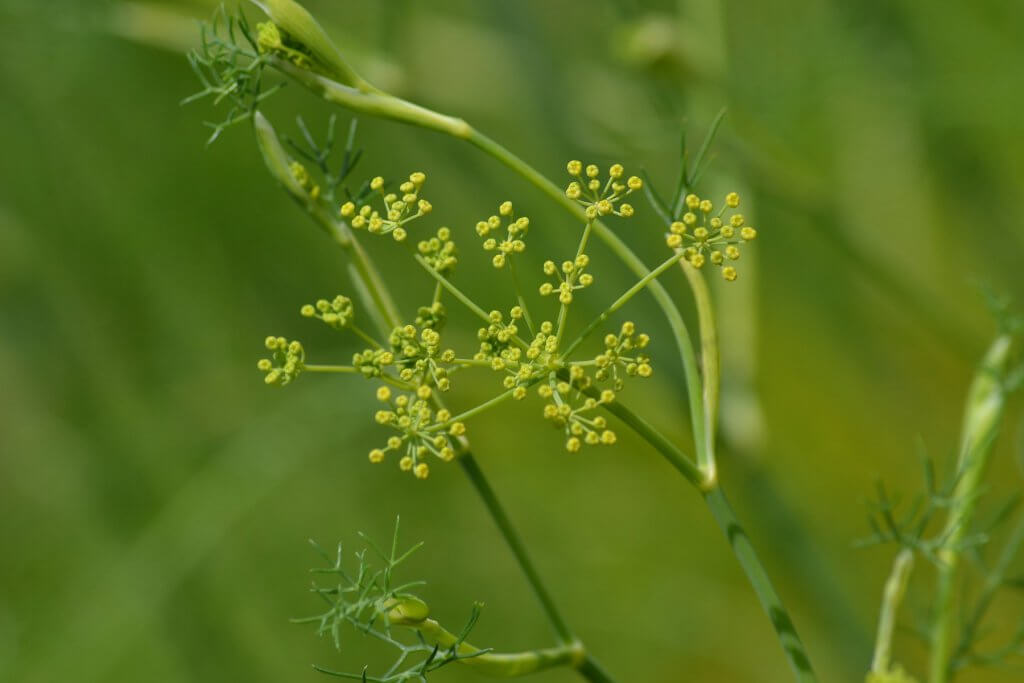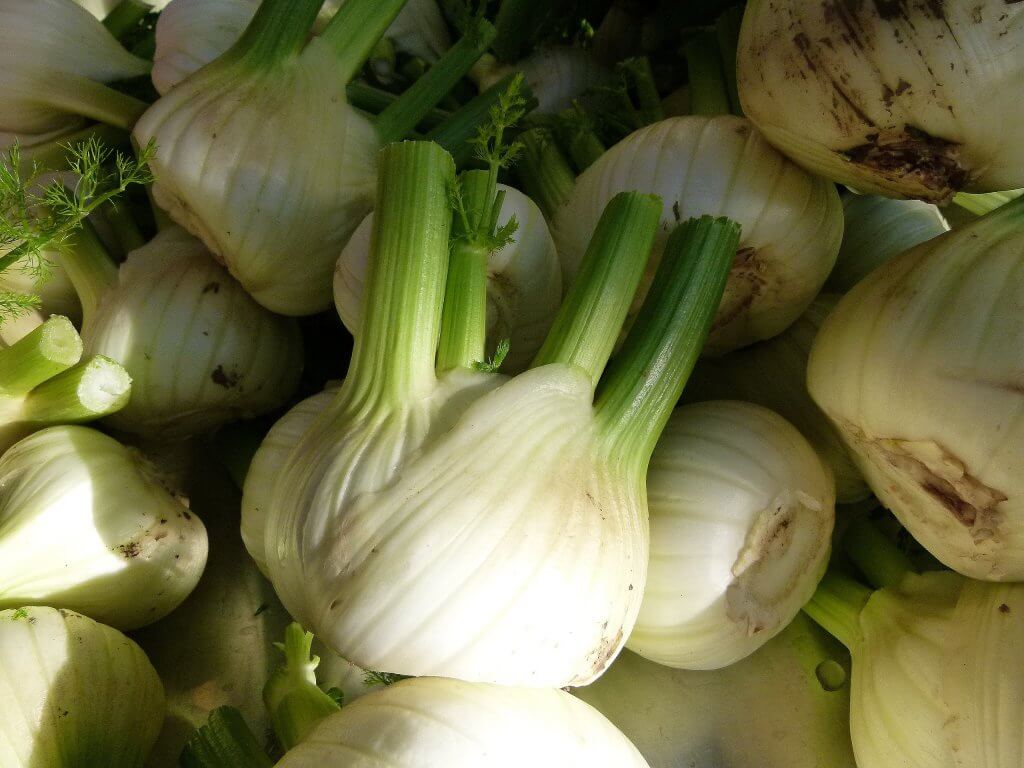Fennel (Foeniculum vulgare) is a perennial herb, originally native to coastal areas of the Mediterranean. You will now find it growing throughout the world, in herb gardens and within the wild. It typically grows in dry soil, within coastal areas or alongside riverbanks and streams. It is actually considered an invasive species within Australia and the US.
The leaves are extremely thin and threadlike and are feathered across the hollowed stems. Towards the base of the plant a bulbous formation of leaves form a structure that resembles a bulb. When flowering you will see tiny, yellow clusters of roughly 40 flower heads.
The entire fennel plant is edible, from the bulb to the fruits. It is a popular herb worldwide, and is used in many cuisines for its aniseed like flavor.

Cultivation and History of Fennel
Cultivation of fennel happens worldwide, with the largest cultivators being India, China and Bulgaria. Although it is generally widely available within shops and supermarkets, you may decide to grow your own.
You can propagate fennel or plant by seed. However it is generally considered to be easier and more successful to grow by seed. It is best to choose a sunny area with very well drained soil. The plant can reach heights of 1.5 meters, so it may be best to position it towards the back of a herb garden.
Fennel is considered a short lived perennial, that will thrive and bloom best within its second growing year. After dying back during winter, deadhead the stems to encourage the growth of new leaves the following year. This is also the perfect time to harvest and collect fennel seeds.

Toxicity
Fennel is not considered toxic, as the whole plant can be safely consumed. Research is however lacking on the impact fennel may have on infants and unborn babies. So if you are pregnant or breast feeding it is best to avoid using fennel within herbal remedies. If you have an allergy to carrots or celery, you may also be allergic to fennel. This is because they are from the same family and contain similar compounds. Fennel can also have the ability to behave like estrogen within the body. So if you suffer from a condition that could be made worse with increased estrogen, fennel should be avoided.
Uses
Culinary uses of Fennel
Fennel is highly aromatic and is has been used throughout the centuries as a culinary herb. You can use the seeds to add a sweet and lightly spiced flavor to cakes and pastries. Chop and add the leaves into salads, soups and fish or meat dishes. Or dress up some roasted vegetables with a sprinkling of fennel leaves. The bulb itself also makes a fantastic addition to meals. Chop the bulb and grill, boil or sauté it with a mixture of vegetables and spices. A delicious herbal tea can also be made with the dried leaves.
Cuisines of the middle east, including Iran and Afghanistan, often use fennel within dishes. Fennel fruits are a popular part of their spice palette. The popular Chinese five spice powders also consist of ground fennel fruits. The fruits are also used to create a delicious, spiced flavoring within Italian sausages. The notorious drink absinthe, which was once drank for medicinal purposes, contains fennel.

Medicinal uses of Fennel
Within India and Pakistan, fennel seeds are coated in sugar and chewed after a meal. It is believed to aid digestion and relieve bad breath.
It can be used as a digestive aid to relieve cramps and bloating. The aromatic oils also have antispasmodic and anti-nauseant effects. Therefore it was often used in treating irritable bowel syndrome, stomach flu and digestive infections.
Add fennel to your dishes for an extra boost of vitamin C, B6 and B9. It is also high in calcium and iron which are essential for healthy functioning of the body.
Did you know…
Fennel is considered one of the notable 9 herbs that were revered by pagan Anglo-Saxons between the 5th and 8th centuries. They used the herbs to create a remedy that would treat infections, poisoning and wounds.
Conclusion
To conclude, fennel is an extremely attractive plant that will look delightful in any garden. Whether being used for its culinary or herbal purposes, or just as an ornamental plant to admire. The entire plant has a great number of uses that will give you lots to experiment with. From herbal teas, to delicious sautéed fennel bulbs. It not only attracts butterflies and pollinators, but has a long and interesting history to consider too.
—————Written by Hannah Sweet
Hannah is a freelance writer and graphic designer from the UK. With a penchant for travelling, photography and all things botanical, she enjoys writing about a wealth of topics and issues, from conservation and slow living, to design and travel. Learn more about her writing and design services at www.sweetmeanders.co
Many of our readers find that subscribing to Eat The Planet is the best way to make sure they don't miss any of our valuable information about wild edibles.
See our privacy policy for more information about ads on this site






